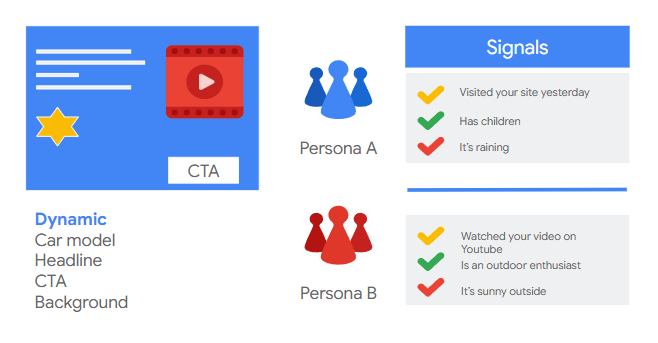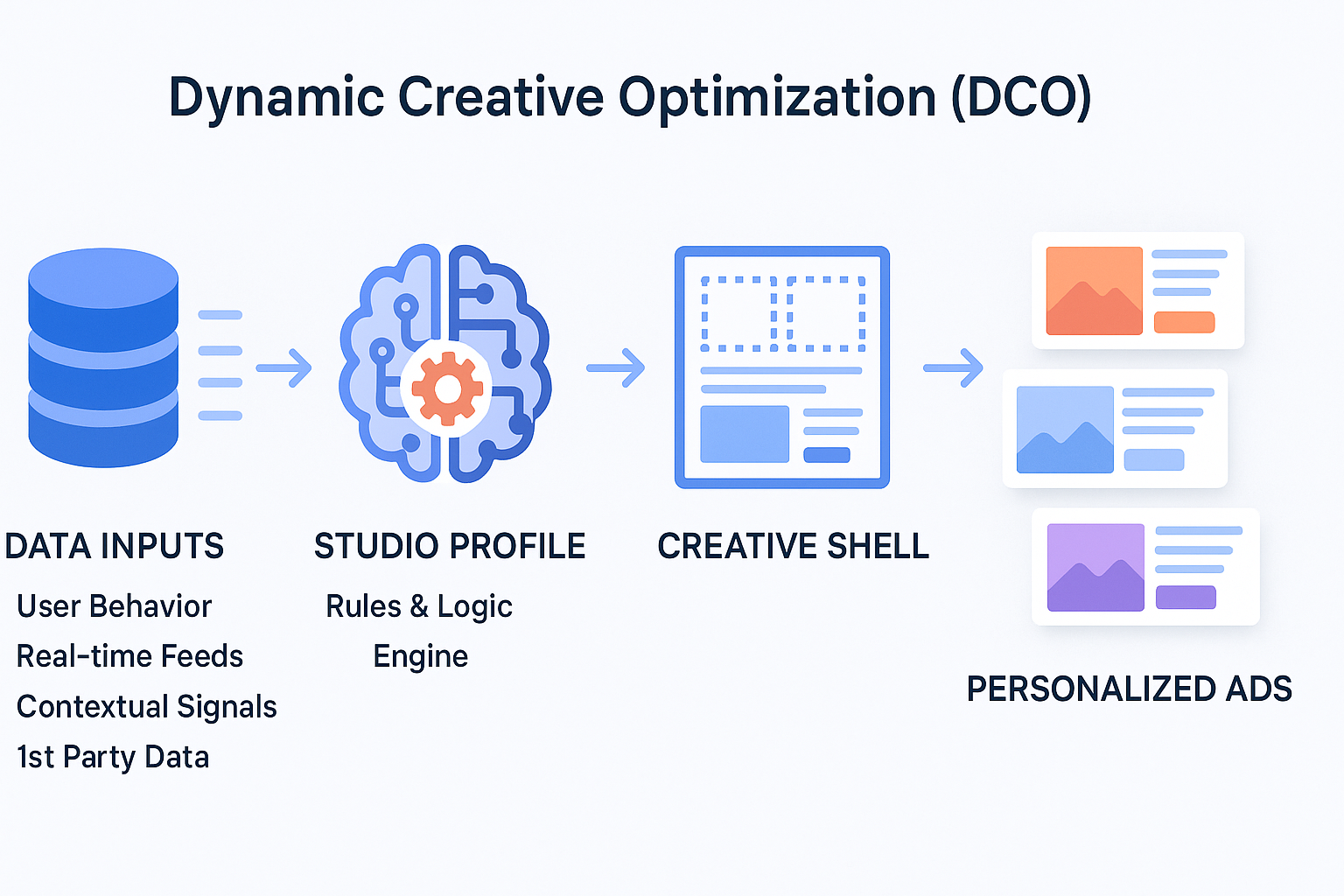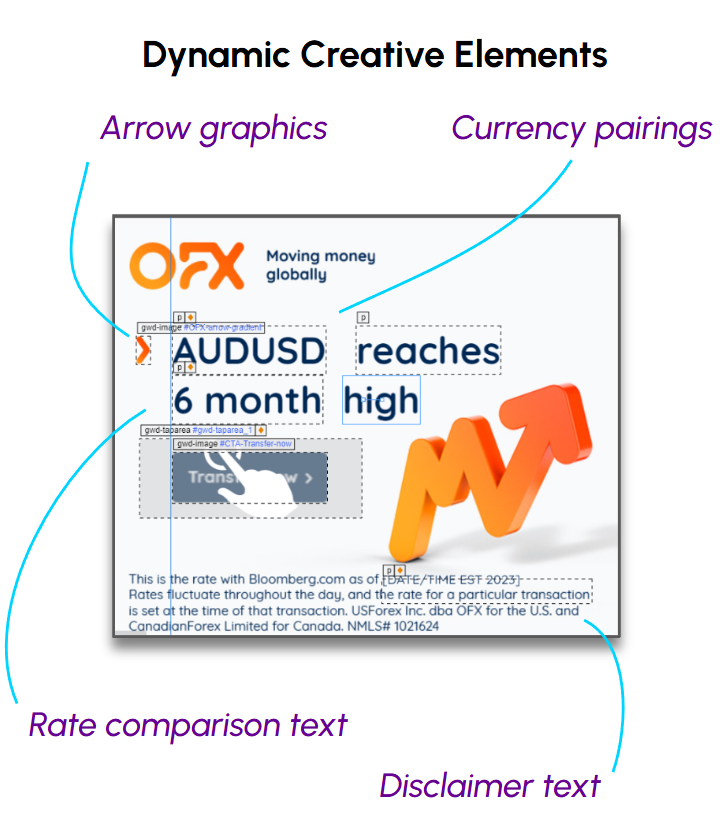Here’s something that keeps digital marketers up at night: you’ve poured hours into crafting the perfect campaign, launched it across your ad platforms, and then something changes. Currency rates fluctuate. Inventory dissipates. A competitor drops their prices. Your carefully crafted messaging is suddenly out of sync with reality.
Sound familiar?
This is where Dynamic Creative Optimisation (DCO) becomes less of a nice-to-have and more of a genuine competitive advantage. Most conversations about DCO either make it sound impossibly complex or ridiculously simple. The truth? It sits somewhere in between, and understanding that middle ground is what separates campaigns that merely run from campaigns that actually perform.
What DCO Actually Means (Without the Jargon)
At its core, Dynamic Creative Optimisation is about making your ads adapt in real-time. Think of it as giving your creative a brain: one that can assess who’s looking at your ad, what they care about, and what’s happening in the world right now, then adjust accordingly.
Instead of creating 50 different ad variations manually, DCO lets you build one creative “shell” and swap out elements on the fly. Product images, headlines, calls-to-action, even pricing: everything becomes fluid (Google Support).
You know what’s interesting? According to a recent Digiday survey, 99% of marketers say DCO is a significant factor in their marketing efforts. That’s essentially everyone. Yet plenty of teams are still wrestling with how to implement it effectively.
The Real-World Problem DCO Solves
Let me paint a picture. You’re running campaigns for a foreign exchange company (let’s call them OFX, because that’s exactly who we worked with). They’re advertising across multiple currencies, and here’s the thing: exchange rates don’t wait for your next creative approval meeting. The AUD/USD rate that was competitive this morning might be yesterday’s news by lunch.
Traditional advertising? You’d be updating creative files manually, pushing them through approval workflows, trafficking them into Campaign Manager 360, and by the time everything’s live, well, the rate’s changed again. It’s exhausting, inefficient, and frankly, a bit soul-crushing for everyone involved.
The challenge isn’t just about speed, though that’s part of it. It’s about relevance. Every impression that goes out with outdated information is a missed opportunity, or worse, a credibility hit.
How DCO Works in the Google Marketing Platform
Google’s approach to DCO through Studio (which integrates with Campaign Manager 360 and Display & Video 360) is built around a few key components that work together surprisingly elegantly.
First, you’ve got your creative assets: the HTML frame that holds everything together. Think of this as your stage; it’s where the performance happens, but it’s designed to accommodate different actors and props depending on who’s watching.
Then there’s the Studio profile: this is where the magic really lives. It’s essentially a set of rules that maps your creative elements to your content. You’re telling the system: “When X condition is met, show Y element.” Simple in concept, powerful in execution.
You can update content in two ways. Profile fields let you manually adjust elements (useful when you want hands-on control), while dynamic feeds pull from data sources automatically. That second option? That’s where things get really interesting, because now you’re not just personalising: you’re automating personalisation.
The workflow typically looks something like this: gather data signals, design your concepts, choose your dynamic strategy, create your feeds, set content rules, upload assets, preview everything (please, always preview), and then launch. Post-launch, you’re updating content as needed and analysing what’s working (Google Support).
The OFX Story: DCO in Action
Here’s where theory meets practice. When XPON worked with OFX, the challenge was clear: how do you maintain campaign relevance when your core value proposition (competitive currency rates) changes constantly throughout the day?
The solution involved building a data pipeline that integrated real-time currency data via Bloomberg’s API directly into BigQuery. From there, we developed a data model and what we called a “Volatility Rule Set” to analyse currency movements, compare real-time rates against historical data (going back up to six months), and determine rate volatility.
But here’s where it gets clever. Based on this analysis, creative elements were dynamically updated through Google Marketing Platform Studio and served across live programmatic campaigns within Display & Video 360. We’re talking about arrow graphics showing rate movements, updated currency pairings, rate comparison text, and disclaimer text: all changing in response to actual market conditions.
The results? Pretty remarkable, honestly:
- 29.5% increase in ad engagements
- 118% increase in website traffic
- 61.8% reduction in Cost-Per-Click
That last number really tells the story. Not only did the ads become more engaging and drive more traffic, but they became more efficient at doing it. That’s the DCO promise fulfilled.
What Makes DCO Work (and What Doesn’t)
The difference between DCO that delivers and DCO that disappoints often comes down to a few critical factors.
Data quality matters more than data quantity.
You can have access to hundreds of signals, but if they’re not meaningful or actionable, you’re just adding noise. Focus on the inputs that genuinely inform creative decisions. For OFX, that was currency volatility. For a retailer, it might be inventory levels or local weather patterns. For a B2B company, it could be engagement signals or firmographic data.
Brand consistency can’t be an afterthought.
When you’re generating potentially hundreds or thousands of ad variations, maintaining brand standards becomes exponentially harder. You need guardrails built into the system – approved fonts, color palettes, logo treatments, tone of voice guidelines. These shouldn’t slow you down; they should give you confidence to move faster.
Context beats targeting.
This is where DCO evolves beyond traditional audience segmentation. It’s not just about who’s seeing the ad; it’s about when, where, and why. A user browsing during their lunch break has different intent than someone researching at 11 PM. Your creative should reflect that.
Testing must be structured.
The beauty of DCO is the ability to test at scale, but that only works if you’re systematic about it. Create hypotheses. Establish statistically significant test groups. Actually analyse the results instead of just watching dashboards. The insights you gain from one campaign should inform the next.
The Technical Bits That Actually Matter
You don’t need to be a developer to implement DCO, but understanding a few technical concepts helps tremendously.
Feed management is crucial. Your dynamic feed (whether it’s product inventory, pricing data, or in OFX’s case, currency rates) needs to be clean, structured, and reliably updated. We’re talking CSV files or API integrations that refresh on the schedule your campaign demands. If your data is stale, your DCO is pointless.
Trafficking efficiency becomes a genuine advantage. Instead of trafficking separate creative IDs for every variation, you’re trafficking one creative ID per ad size. That’s it. The complexity lives in the backend logic, not in your Campaign Manager 360 setup (Google Support).
Reporting dimensions need to be set correctly from the start. You want visibility into which combinations perform best, not just aggregate performance. This granular data is what turns DCO from a delivery mechanism into a learning engine.
Common Pitfalls (Because Everyone Has Them)
Even experienced teams stumble with DCO implementation. Here are the mistakes we see repeatedly:
Over-engineering the first attempt.
Start with one or two dynamic elements, prove the concept, then scale complexity. Trying to make everything dynamic from day one usually leads to delayed launches and frustrated stakeholders.
Ignoring the approval workflow.
When ads update automatically, how do you maintain oversight? How do brand teams review changes? How do legal teams ensure compliance? Sort this out before launch, not after someone spots an issue in market.
Forgetting about fallbacks.
What happens when your data feed fails? When an API doesn’t respond? You need default creative ready to serve. Otherwise, you risk blank ads or broken experiences: both considerably worse than static creative.
Treating DCO as “set and forget.”
The automation handles delivery, but strategy still requires humans. You need to monitor performance, test new approaches, and refine your content rules based on what you’re learning.
Why This Matters Right Now
The advertising landscape is shifting in ways that make DCO less optional. Privacy changes have limited our ability to track users across devices, meaning we have less behavioral data to work with. First-party data and contextual signals become more valuable, and DCO is built to capitalise on exactly those inputs (Pixis).
At the same time, consumer expectations for relevance have never been higher. Generic ads don’t just underperform; they actively annoy people. We’ve all experienced it: seeing an ad for something we just bought, or an offer that doesn’t apply to our location, or pricing that’s clearly outdated. Every irrelevant impression erodes trust.
DCO addresses both challenges simultaneously. It maximises the value of the data you do have while delivering experiences that actually match the moment.
Getting Started: A Practical Roadmap
If you’re convinced DCO is worth pursuing (and honestly, if you’ve read this far, you probably are), here’s how to approach it without overwhelming your team or your budget.
Start with your most volatile content. What changes frequently in your business? Pricing? Inventory? Promotions? That’s your entry point. Static creative can’t keep pace with dynamic business conditions—that’s where DCO shows immediate value.
Identify your data sources. What feeds do you have access to? Product catalogs? CRM data? Third-party APIs like Bloomberg (as OFX used)? Map out what’s available and what’s reliable enough to build campaigns around.
Design for flexibility from the start. When your creative team builds templates, they should think in terms of components. This image could be swapped. This headline could change. This CTA might need regional variations. Build with that modularity in mind.
Partner with people who’ve done this before. Look, we’re biased: XPON is a leading Google Partner in Australia and New Zealand, and we’ve implemented DCO across numerous clients. But whether it’s us or someone else, working with experienced practitioners saves months of trial and error. The Google Marketing Platform has tremendous capability, but knowing how to harness it makes all the difference.
Plan for iteration. Your first DCO campaign won’t be perfect. That’s fine. The goal is to launch, learn, and improve. Set clear success metrics, give yourself permission to adjust, and use each campaign to inform the next.
The Future Is Already Here
Here’s the thing about DCO: it’s not emerging technology anymore. It’s table stakes for serious performance marketing. The question isn’t whether to implement it, but how quickly you can get up to speed.
The brands winning right now are the ones who’ve figured out how to marry creative excellence with technical capability. They’re using DCO not just to automate delivery, but to genuinely improve relevance. They’re testing more variations, learning faster, and adapting to market conditions in real-time.
OFX saw nearly 30% improvement in engagement and cut their CPC by more than half. Those aren’t incremental gains: they’re step-function improvements that come from fundamentally changing how creative gets delivered.
The tools exist. The platforms support it. The question is whether your organisation is ready to embrace a more dynamic approach to creative. Because your competitors? They’re probably already figuring this out.
Want to explore how Dynamic Creative Optimisation could work for your campaigns? XPON partners with brands across Australia and New Zealand to implement DCO strategies through Google Marketing Platform. We handle everything from data pipeline setup to creative template design to ongoing optimisation, so you can focus on strategy while we handle the execution. Get in touch to discuss your specific needs.




